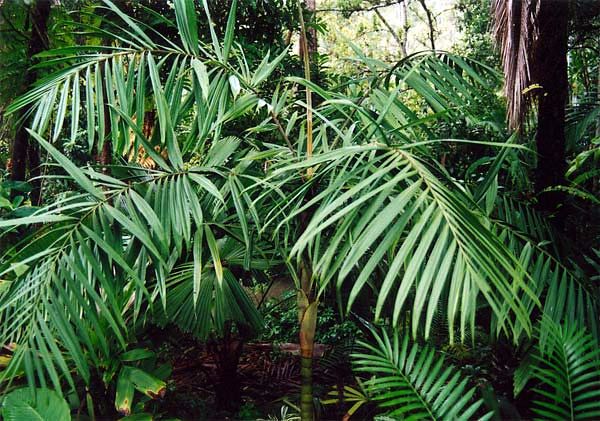
Dypsis rivularis, or the “Sari Palm”
Endemic to Madagascar, the Dypsis rivularis gets its name from that fact that – along its native habitat – this species of palm is found growing along rivers. Endemic to northwest Madagascar, it occurs in moist forests between Marovoay and Ambilobe, right along the edges of streams and among boulders at low elevations. It is also known as the “sari palm”. The sari palm can grow up to 15 feet tall, and has a green feathery foliage with green stems and stalks of red salmon red that fades with age.
This species is one of the most endangered palms on the planet, as it is severely threatened by habitat loss through clearance for shifting agriculture and logging. According to the International Union for Conservation of Nature (IUCN), almost all of the known habitat sites are not protected and are subject to clearance, reducing the quality and extent of the habitat and probably reducing the population which is now estimated as 100 mature individuals.
Due to a continued decrease in the number of mature palms, decline in the extent and quality of its habitat and ongoing harvest of seeds – despite strict trade regulations., this species qualifies for listing as Endangered on the IUCN Red List. The IUCN Red List is the world’s most comprehensive information source on the global conservation status of animal, fungi and plant species and their links to livelihoods.
There are two Dypsis rivularis trees growing in the Merwin Palm Forest, one submature and one mature.
Want to “virtually explore” the Merwin Palm Collection? Search through our archive of Palm Facts of the Week, featuring palms hand-planted by W.S Merwin. To search through the Online Merwin Palm Database, visit this link.
If you’re inspired to help The Merwin Conservancy preserve and care for the world-renowned Merwin Palm Collection into the future, please consider making a tax-deductible donation.

